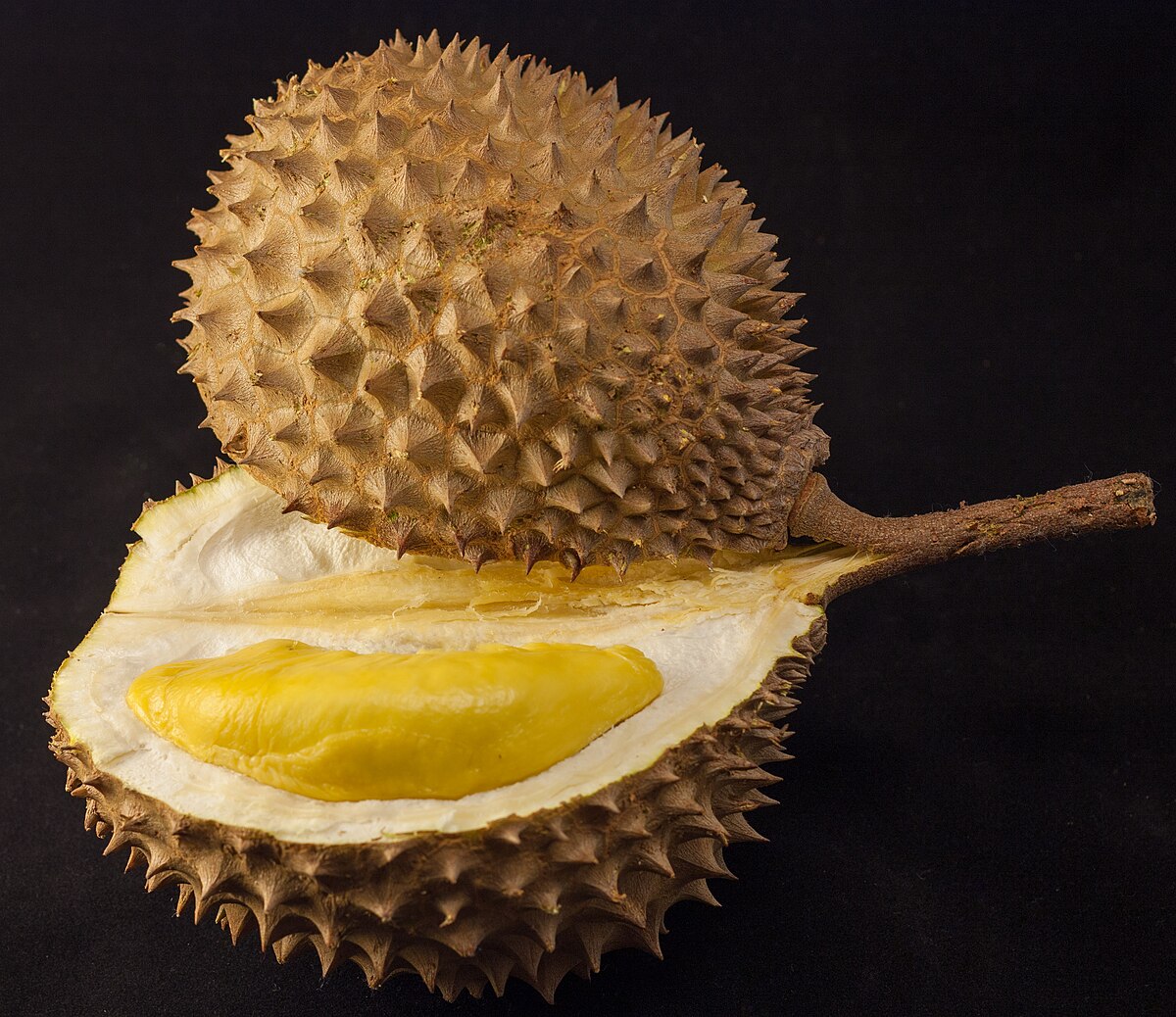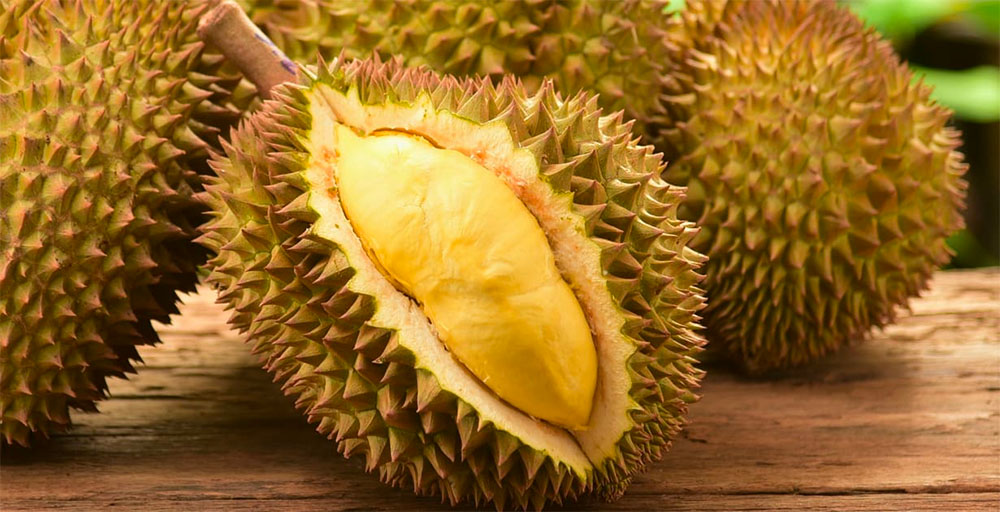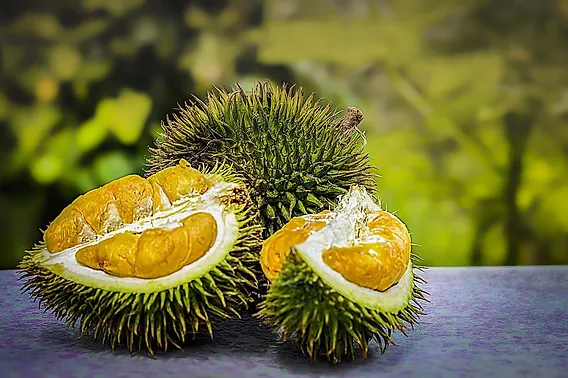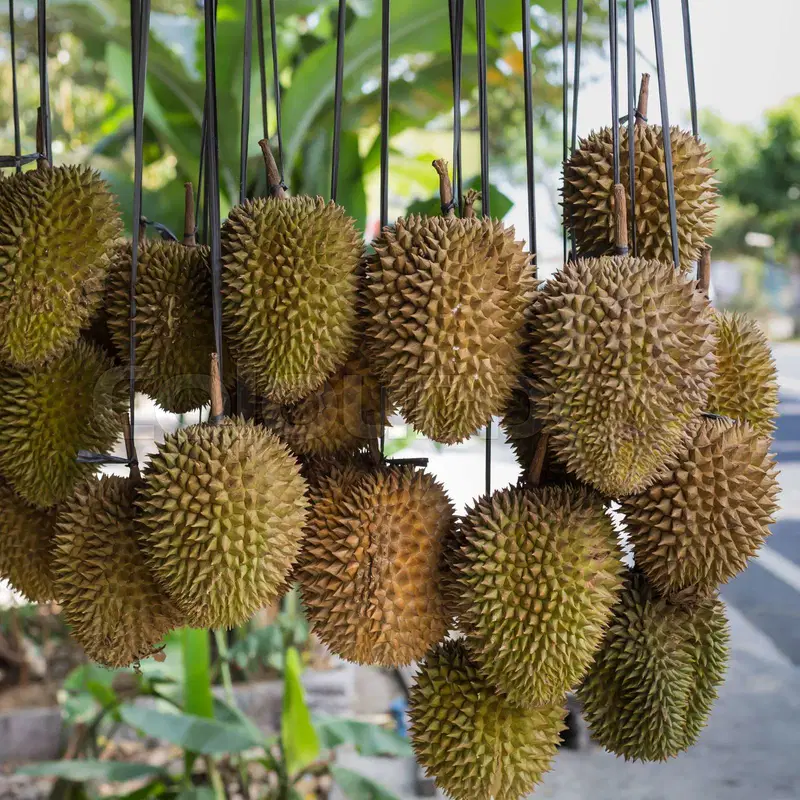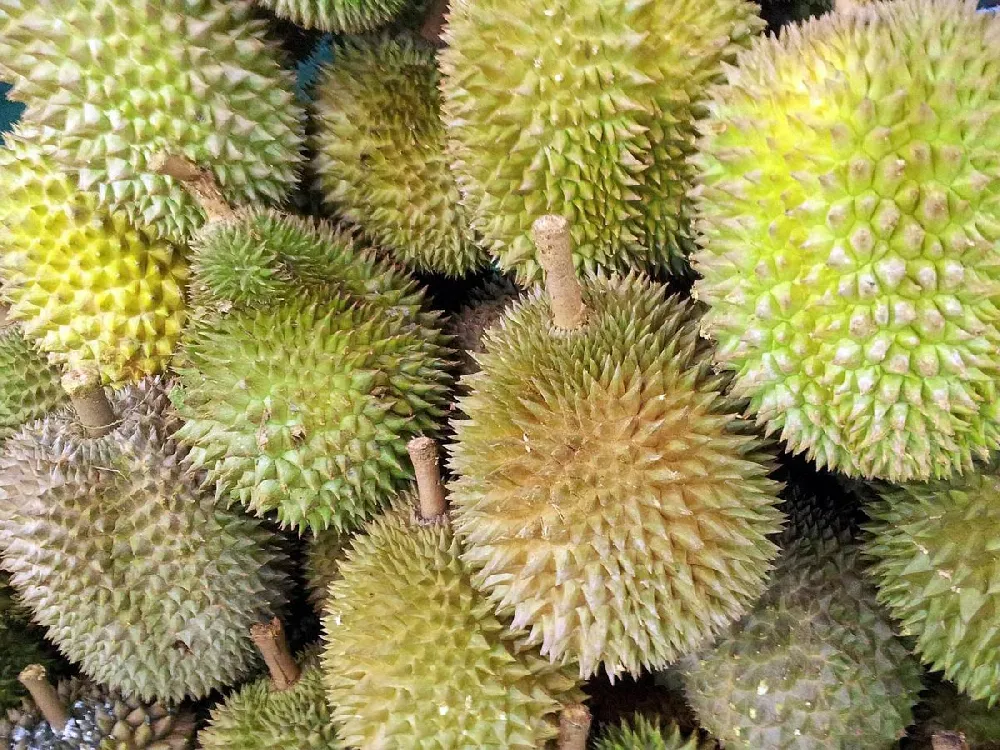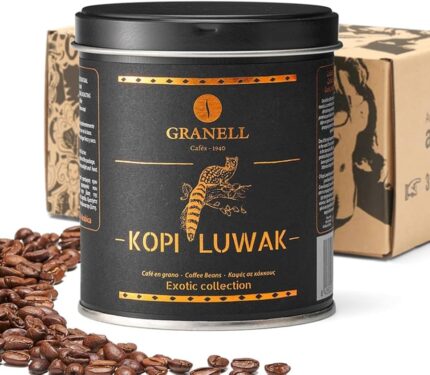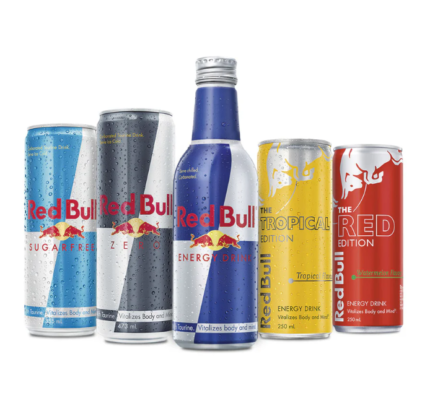Description
The southeast Asian genus Durio belongs to the Mallow family (Malvaceae) and comprises 20-30 species, at least eight of which are edible. The economically most important species of durian (Malay for “thorny fruit”), Durio zibethinus, has been cultivated in south-east Asia for centuries. Its large white nocturnal flowers are borne directly on the major branches (a phenomenon called ‘cauliflory’) which later have to be strong enough to carry the heavy fruits. The flowers reportedly smell like sour milk and are pollinated by bats which drink the copious nectar offered.
Durians are so popular in southeast Asia that there are literally hundreds of different cultivars of Durio zibethinus. This is also the only species traded internationally. You can easily pick up a durian in London’s Chinatown if you are willing to pay around £20 for one. Alternatively, you can buy a few individual seeds on a Styrofoam tray covered with cling film. As for different flavours, I have only ever seen one single variety offered in Europe, which is usually imported from Thailand – the Mon Thong variety (Mon = pillow, Thong = gold).
Size and growth
The durian’s highly-prized fruits can be the size of a football and weigh up to four kilograms. On the outside they are covered by a ferociously spiny, dull green to yellowish-brown husk (duri = Malay for thorn). Inside, the fruit is divided into 5 compartments representing the five carpels from which the fruit develops. When ripe, the heavy fruits drop off the branches and split slightly from the top down along 5 distinct, preformed lines which correspond to the median lines of the carpels. At this stage the fruits begin to emit their infamous ‘body odour’ that has been variously described as resembling a blend of sweat, faeces, unwashed socks or a mix of rotten garlic and onions.
Durian products
Disliked by most Europeans and banned from the underground in Singapore, the durian is treasured by people all over Asia and revered as the veritable ‘King of Fruits’. What seems like a dubious admiration does not reflect a twisted olfactory preference, but a fondness for the extraordinarily delicious taste of what lies inside the malodorous pod. The people of southeast Asia don’t just enjoy the fresh fruits. Durians are used to make all kinds of mostly sweet treats like pastes, cakes, cookies, milk shakes, ice cream, chips, candies and lots more.
Wallace on durian
The edible part of the durian consists of the white or cream to golden-yellow arils (= seed appendages) covering several very large (c. 2 x 6 cm), chestnut-brown seeds. When the fruits are ripe, the hard tissue of the yellowish arils disintegrates into a custard-like cream whose consistency and flavor has been described as a tantalizing mixture of nuts, spices, bananas, vanilla and onions. After his first visit to Borneo, the great 19th century naturalist Alfred Russell Wallace wrote:
The Durian grows on a large and lofty forest tree, somewhat resembling an elm in its general character, but with a more smooth and scaly bark. The fruit is round or slightly oval, about the size of a large cocoanut, of a green colour, and covered all over with short stout spines the bases of which touch each other, and are consequently somewhat hexagonal, while the points are very strong and sharp. It is so completely armed, that if the stalk is broken off it is a difficult matter to lift one from the ground. The outer rind is so thick and tough, that from whatever height it may fall it is never broken. From the base to the apex five very faint lines may be traced, over which the spines arch a little; these are the sutures of the carpels, and show where the fruit may be divided with a heavy knife and a strong hand. The five cells are satiny white within, and are each filled with an oval mass of cream-coloured pulp, imbedded in which are two or three seeds about the size of chestnuts. This pulp is the eatable part, and its consistency and flavour are indescribable. A rich butter-like custard highly flavored with almonds gives the best general idea of it, but intermingled with it come wafts of flavor that call to mind cream-cheese, onion-sauce, brown sherry, and other incongruities. Then there is a rich glutinous smoothness in the pulp which nothing else possesses, but which adds to its delicacy. It is neither acid, nor sweet, nor juicy; yet one feels the want of none of these qualities, for it is perfect as it is. It produces no nausea or other bad effect, and the more you eat of it the less you feel inclined to stop. In fact to eat Durians is a new sensation, worth a voyage to the East to experience..” [Alfred Russell Wallace 1869: ‘The Malay Archipelago’]

